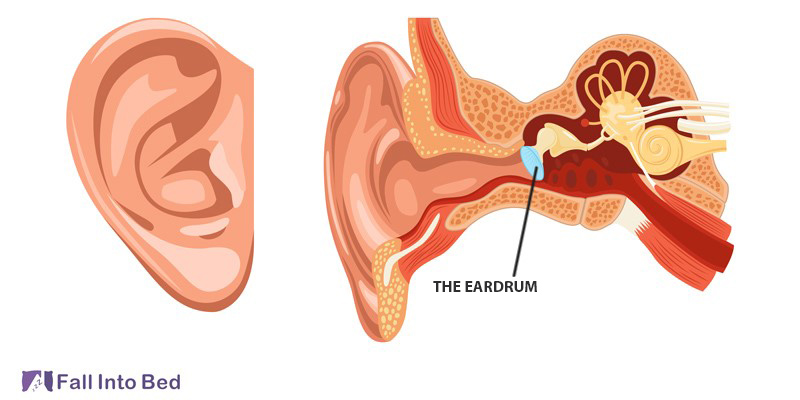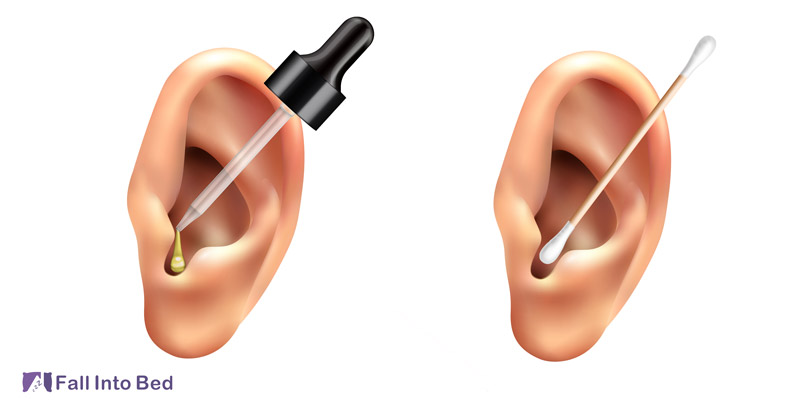What can cause eardrums to rupture?
Eardrum or the tympanic membrane is a thin circular tissue inside your ear that separates your outer and middle part of the ear. This membrane can protect your middle ear from dirt and bacteria. Your eardrum also plays an important role in your ability to hear.
When you get a hole or a tear in your eardrum, or perforation, you’ll have a ruptured eardrum. This can be dangerous as your middle ear can be exposed to infection and you’ll experience hearing loss or tinnitus (ringing in your ears).
There are various things that can cause a ruptured eardrum:
- Foreign objects; Using a Q-tip or any small shar-headed object to clean your ear can cause a ruptured eardrum.
- Trauma; getting a hard slap right on your ear, or severe head or ear trauma can tear your eardrum.
- Explosive sounds; Your eardrum is more likely to rupture if you’re near a very loud explosion, gunfire, etc.
- Middle ear infection; This is also a common cause of ruptured eardrum. The accumulation of fluids and pressure in the middle ear can cause the eardrum to burst.
- Barotrauma; Changes in the air pressure in your ear can tear your eardrum. Blockage or irritation in the Eustachian tube can cause the air between your eardrum and middle ear to get trapped and increase the chance of rupture due to any pressure change. This is common in activities like flying in an airplane, scuba diving, or driving at high altitudes.

What are the signs of a ruptured eardrum?
The feeling of a ruptured eardrum is like a sudden sharp pain in your ear. But unless something hit your ear you might not notice that your eardrum is ruptured. Here are the symptoms of eardrum rupture:
- Sudden sharp pain in your ear
- Sudden hearing loss. you might find it difficult to hear things as if the sounds are muffled.
- Drainage from the ear. It might look like blood or pus.
- Tinnitus. A ringing or buzzing noise from inside of your ear.
- Dizziness or vertigo
- Nausea
In most cases, a ruptured eardrum can heal on its own within 2-3 months. However it’s vital to consult with a ENT specialist to make sure there is no further damage. In more severe cases, the eardrum requires surgery to heal.
What side should I sleep on with a ruptured eardrum?
People with a ruptured eardrum can have difficulty sleeping due to the pain. So, it’s important to talk to a doctor about painkillers to help them sleep. Changing your sleep position can also help the healing process.
Sleeping on the back or on the side with the ruptured eardrum facing up can create a comfortable position for sleep. When the ruptured eardrum is up, it can also help absorb the eardrops if they’re prescribed. Sleeping on the side is a more recommended position if you have breathing problems during sleep.
If you experience lower back pain during sleep, both positions are fine. However, putting a pillow under your knees in back sleeping and between your knees in side sleeping can help your spine stay aligned during sleep.
Sleeping on the side of the affected ear is not recommended as it can create further damage.
Elevating your head using extra pillows can also help reduce the pressure in your ears.
It’s advised to avoid Sudden Movements. Changes in position, might jostle your ear and cause discomfort.
You should keep in mind that when choosing a side to sleep on, other factors and conditions can affect the situation as well. For example if you are pregnant, or suffer from high blood pressure or acid reflux, sleeping on the right side is not a very good idea. You can check the differences between sleeping on the right side and left side to choose you sleeping position wisely.
How to deal with a ruptured eardrum at home?
Usually a ruptured eardrum will heal after a few months, if it’s not a sever tear. However, there are things we can do to prevent further damage or infection.
Protect the affected ear
Make sure you keep water out of your ear canal and avoid swimming since it can cause infection and delay the healing process. If water does get in your ear, turn your head to the side and gently pull your earlobe in different directions. You can use a cotton ball to dry the ear. Do not insert any thing in the ear canal.
Also using a warm compress on the affected ear can ease the pain for a while.
Avoid spicy food
Any spicy or irritating food should also be avoided at this time.
Take over-the-counter painkillers
If the pain is bothering you, keeping you from doing your normal routine and sleep, try pain reliefs to ease the pain.
Doctor check-ups
It’s important to talk to your ENT specialist. If there is infection in your ear you might need antibiotics. They might also prescribe eardrops if needed.
Don’t blow your nose too hard
Blowing your nose forcefully can damage your eardrum as it’s trying to heal.

FAQs about ruptured eardrums
How long does it take for the eardrum to heal?
A ruptured eardrums mostly heal on their own after about 2 to 3 months. However, if the tear is severe, it requires surgery to heal.








